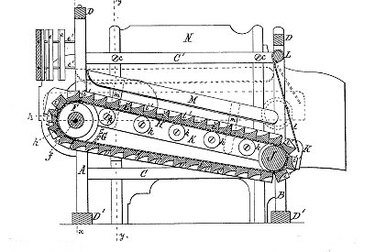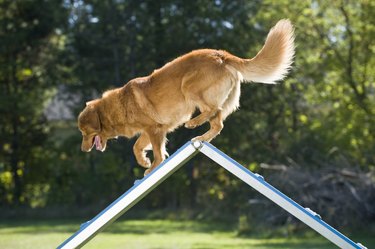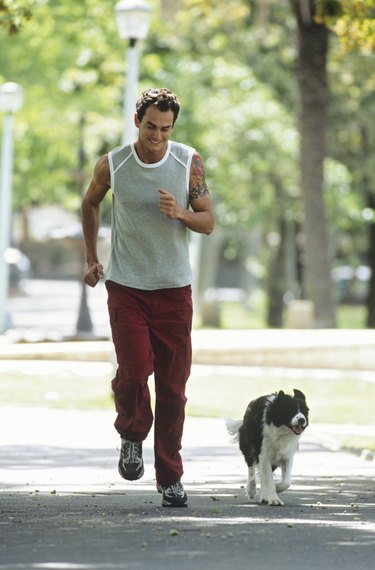Tip
Get advice about how to use a dog treadmill. Introduce your dog to the treadmill gradually and give plenty of rewards for any attempt at usage.

Historically, a dog-powered treadmill was a popular item on a small farm. The energy generated by the dog was used to churn butter, grind stones or power a sewing machine. The heavy, wooden slat treads were designed for a dog to use at a slow, steady pace for several hours. Nowadays, dog treadmills are used to give overweight dogs a well-needed workout. For normal sized pets, treadmill running is a handy substitute for other forms of exercise when the weather, or busy schedules, don't allow for quality outdoor time. Modern treadmills are lighter than their predecessors and consist of three main parts: the frame, the rollers and the belt. The guidelines below can help you to formulate a strategy to incorporate these key elements into your dog treadmill design.
Step 1

Measure your dog. You will need to ensure the treadmill design is long enough and wide enough for your dog to use comfortably.
Video of the Day
Step 2
Design the frame. Frames can be constructed out of wood or metal and can be made with side rails. The dog can be clipped to these rails to help keep him from falling off. Notches can be added to adjust the incline of the equipment, making the workout more challenging as the dog's performance improves. Rollers can be attached to the frame via axle and ball bearing, or using independent casings.
Step 3
Determine what sort of roller system you'd like to use. Unless you have a very small dog, the width should be between 15 and 18 inches. Large rollers will be positioned at each end of the frame with slightly smaller rollers along the length. A simple roller can be made by filling a piece of two-inch PVC pipe with foam and running an axle thorough the center. The rollers are then covered with polyurethane plastic; forming a base which is positioned and secured within the frame.
Step 4
Find a belt. Belts can be salvaged from old gym equipment, taking them straight from human powered machines. You'll need a piece of approximately 10 feet long, depending on the size of your dog. To simplify the process a gravity roller section can be purchased from a conveyer company or occasionally found on EBay or Craigslist. Alternatively, you could incorporate carpet into your design, rather than a standard conveyor belt.
Step 5
Include a slip-out roller. When designing your dog treadmill, it will need to include a system for removing one or more of your rollers, in order to properly incorporate the belt. The belt will need to be fairly tight to work correctly. By slipping several of the rollers out one side, and sliding the belt into position, the belt can be pulled taut when the rollers are replaced.
Step 6

Consider your options. A variety of materials could be incorporated into the design. A dog treadmill could be created from wrapping a belt of flexible material around spools or old wagon wheels, using sturdy wooden slats instead of rollers. Rails could be replaced by gates, or ignored entirely.
Step 7
Modify a human treadmill to suit your dog if the above seems too taxing. Used gym equipment can be found in the classified ads, at thrift stores, and in yard sales for a fraction of their original price.
Video of the Day